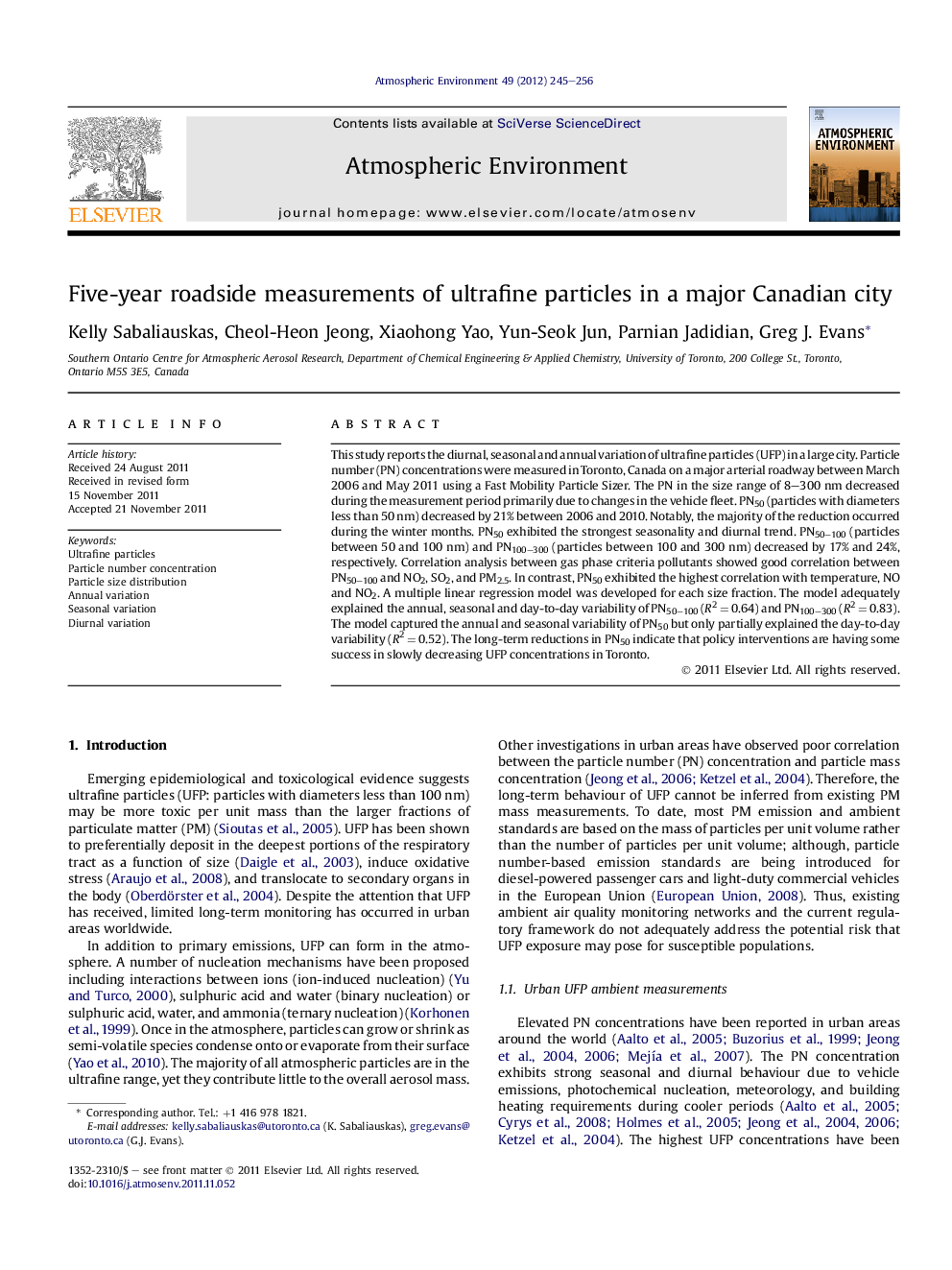| کد مقاله | کد نشریه | سال انتشار | مقاله انگلیسی | نسخه تمام متن |
|---|---|---|---|---|
| 4439084 | 1620422 | 2012 | 12 صفحه PDF | دانلود رایگان |

This study reports the diurnal, seasonal and annual variation of ultrafine particles (UFP) in a large city. Particle number (PN) concentrations were measured in Toronto, Canada on a major arterial roadway between March 2006 and May 2011 using a Fast Mobility Particle Sizer. The PN in the size range of 8–300 nm decreased during the measurement period primarily due to changes in the vehicle fleet. PN50 (particles with diameters less than 50 nm) decreased by 21% between 2006 and 2010. Notably, the majority of the reduction occurred during the winter months. PN50 exhibited the strongest seasonality and diurnal trend. PN50–100 (particles between 50 and 100 nm) and PN100–300 (particles between 100 and 300 nm) decreased by 17% and 24%, respectively. Correlation analysis between gas phase criteria pollutants showed good correlation between PN50–100 and NO2, SO2, and PM2.5. In contrast, PN50 exhibited the highest correlation with temperature, NO and NO2. A multiple linear regression model was developed for each size fraction. The model adequately explained the annual, seasonal and day-to-day variability of PN50–100 (R2 = 0.64) and PN100–300 (R2 = 0.83). The model captured the annual and seasonal variability of PN50 but only partially explained the day-to-day variability (R2 = 0.52). The long-term reductions in PN50 indicate that policy interventions are having some success in slowly decreasing UFP concentrations in Toronto.
► Ultrafine particles (UFP) were measured near a roadway in downtown Toronto, Canada.
► The annual, seasonal and diurnal UFP trends were explored between 2006 and 2011.
► Particles with diameters <50 nm and 50–100 nm decreased by 21% and 17%, respectively.
► UFP exhibited correlation with NO, NO2, SO2, PM2.5, temperature, and wind speed.
► A multiple linear regression model successfully predicted UFP concentrations.
Journal: Atmospheric Environment - Volume 49, March 2012, Pages 245–256